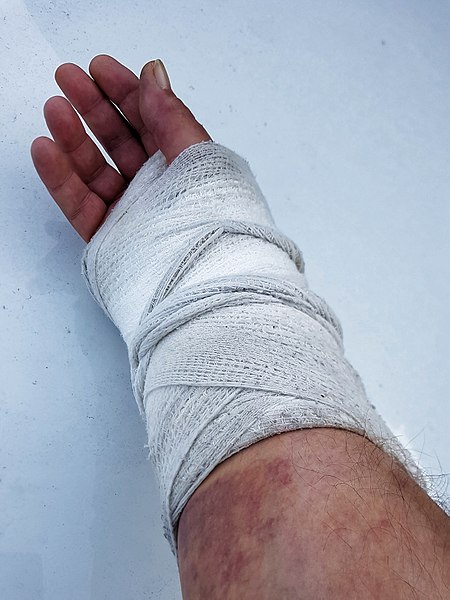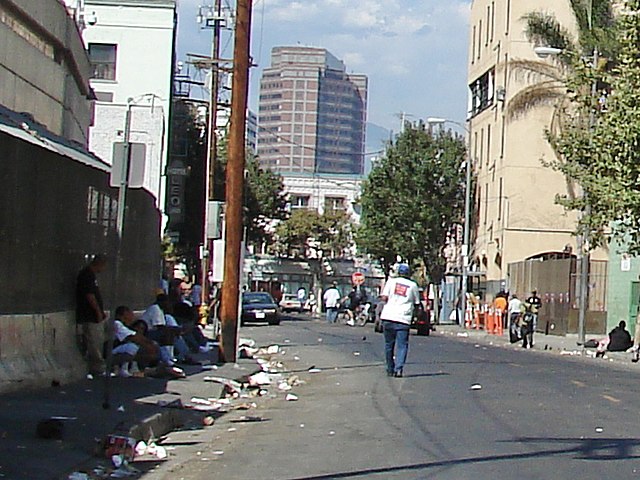Fentanyl overdoses are still claiming lives hand over fist across the United States. But a new drug is spreading in popularity with absolutely horrific results. In the open-air drug market, users commonly refer to the drug as “tranq.” It’s characterized by grotesque necrosis that can lead to loss of limbs… if not life. Some experts are predicting it’s the rotting face of the next drug death wave. And with its presence finally hitting Downtown Los Angeles, Southern California may be entering the Summer of Tranq.
Necrotic Effects Resulting in “Tranq Wounds”

Originating in Philadelphia, tranq is the street name of an animal tranquilizer scientifically known as xylazine. Tranq is typically injected, often resulting in users immediately losing consciousness. When users awake, they regularly exhibit extreme signs of withdrawal.
Frequent use of tranq can sometimes be identified by open sores and lesions that fester with necrosis. Experts hypothesize this is the result of constriction of blood vessels, resulting in tissue death.
The open “tranq wounds” don’t necessarily appear at the site of injection. And with tranq wounds difficult to treat, users have experienced loss of limbs and emergency amputations. Because of this gruesome side effect, tranq is drawing comparisons to krokodil, a Russian street drug that made headlines over a decade ago.
Tranq Leaves Its Mark in Downtown Los Angeles

On the afternoon of Wednesday, April 5, firefighters reported to the site of a medical emergency in Downtown Los Angeles. Two men and a woman were pronounced dead at the scene; a building that offered sanctuary to underprivileged residents of the hazardous Skid Row district. While an official cause of death wasn’t immediately released, detectives admitted the fatalities seemed related to substance abuse. And that substance is expected to be confirmed as xylazine.
Late last year, it was confirmed that tranq had spread from the northeastern U.S. to at least 39 states. Among them was California, prompting the Los Angeles County Department of Public Health to issue a public statement, urging city residents to be aware of the relatively new drug.
Uncertainty in Responding to the Horrific Drug
Experts seem to be at odds about how to deal with the rise of tranq. In January, a collective of House Republicans urged the DEA to add xylazine to national drug scheduling. By scheduling tranq, the decay-inducing drug would become harder to obtain. Since it’s a widely used animal tranquilizer, it’s relatively easy for illegal drug manufacturers to access. It can even be ordered online with little to no issue.

Yet, studies have long illuminated the War on Drugs as a failure. And those researching addiction have cautioned that banning xylazine won’t treat the overall problem. Manufacturers will just turn to an even more hazardous chemical to cut their product.
And this underscores one of the most tragic aspects of tranq. No one is seeking out a flesh-eating street drug. They’re seeking out opioids that are frequently cut with xylazine to save money. Xylazine is often found alongside fentanyl, creating a toxic cocktail with a frequently fatal finish.
Difficulties in Treating Xylazine Abuse
Unfortunately, tranq isn’t always easy to identify. And it’s even harder to treat. When patients are admitted into rehab facilities, detox clinics, and hospitals, they’re very rarely tested for xylazine due to its legal classification.
If an addict were to seek treatment for xylazine, they’d quickly find that there’s no official detox protocol. And the majority of rehab clinics would turn a xylazine addict away because they’re prohibited from admitting patients with open wounds.

The tranq wounds complicate treatment efforts even further. As mentioned, festering tranq wounds often require amputation if not treated in a timely manner. These open lesions are also highly prone to infection. When compounded with withdrawal symptoms, the experience can range from agonizing to fatal.
The High Chance of a Misidentified Overdose
When used to cut opioids, tranq overdoses are sometimes misidentified as strictly opioid overdoses. Since naloxone (often identified as Narcan, a popular brand name for the chemical) has shown some efficacy in treating fentanyl overdoses, responders may think it’s a promising solution.
However, while treating the opioid aspect of the overdose, naloxone cannot cancel out the deadly effects of a tranq overdose. Rather, tranq overdoses benefit from the additional administration of oxygen tanks or emergency breathing procedures. Oxygen tanks are rarely available. So, even if a tranq overdose is properly identified, treatment is rarely effective.
Recognizing the mounting threat of tranq in LA’s open-air drug market, the Los Angeles County Department of Public Health is doing what it can to secure xylazine testing strips. But they’re also bracing for a wave of addiction and overdoses as the so-called “zombie drug” becomes more prevalent in the city.
With a brand that says as much as JohnHart’s, Senior Copywriter Seth Styles never finds himself at a loss for words. Responsible for maintaining the voice of the company, he spends each day drafting marketing materials, blogs, bios, and agent resources that speak from the company’s collective mind and Hart… errr, heart.
Having spent over a decade in creative roles across a variety of industries, Seth brings with him vast experience in SEO practices, digital marketing, and all manner of professional writing with particular strength in blogging, content creation, and brand building. Gratitude, passion, and sincerity remain core tenets of his unwavering work ethic. The landscape of the industry changes daily, paralleling JohnHart’s efforts to {re}define real estate, but Seth works to maintain the company’s consistent message while offering both agents and clients a new echelon of service.
When not preserving the JohnHart essence in stirring copy, Seth puts his efforts into writing and illustrating an ongoing series entitled The Death of Romance. In addition, he adores spending quality time with his girlfriend and Romeo (his long-haired chihuahua mix), watching ‘70s and ‘80s horror movies, and reading (with a particular penchant for Victorian horror novels and authors Yukio Mishima and Bret Easton Ellis). He also occasionally records music as the vocalist and songwriter for his glam rock band, Peppermint Pumpkin.



Who are you